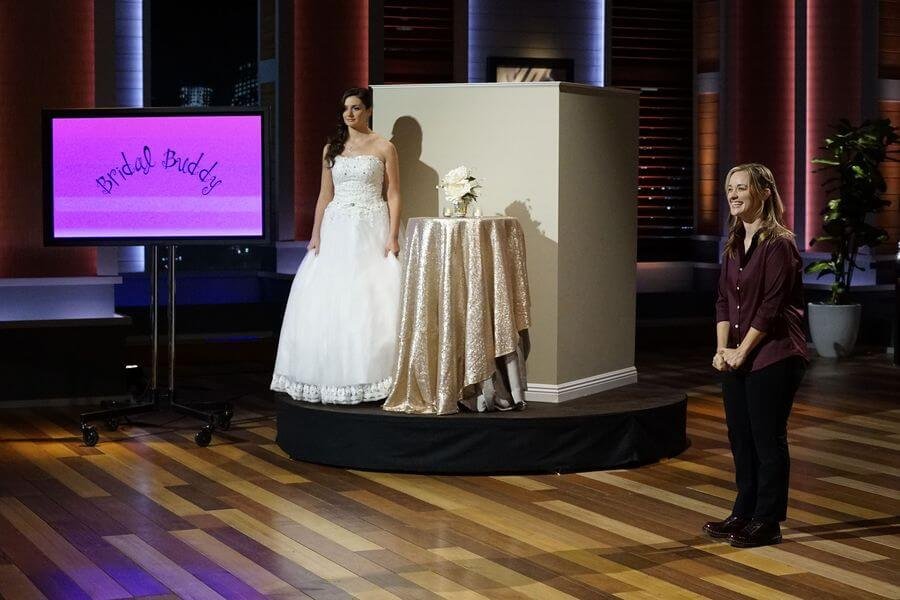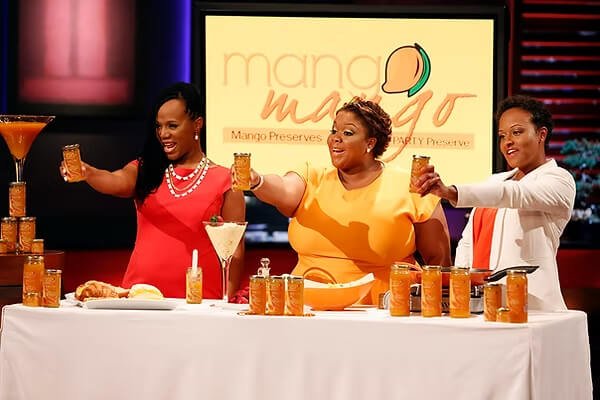Let’s be blunt: most Shark Tank stories end in hype and a tailspin back to reality. Some don’t survive the holiday hangover. But then you get a play like Modern Christmas Trees—not your mom’s tinsel, but a minimalist, modern design with a real founder’s story. Matt Bliss didn’t just show up to sell a tree. He pitched a legacy and knew exactly what he wanted. Did Shark Tank actually move the need for this business? Let’s break down what worked, what nearly tanked, and how this sharp operator found ongoing traction after the cameras shut off.
Contents
ToggleWhat Actually Is the Modern Christmas Tree?
Let’s kill the noise: Modern Christmas Trees isn’t just another plastic stand-in with blinking lights. This is an acrylic or glass, mid-century-inspired tree built for easy storage, quick setup, and people who don’t want the messy pine needle drama. Most of its buyers are design junkies or loyal fans of less is more. You’re getting clean lines, modular simplicity, and a nod to a 1960s original, not a blow-up Santa or Walmart fake. If you know the joy of putting up a tree but hate the teardown, this is your lane.
And in a holiday product market filled with cheap knock-offs, the Modern Christmas Tree stands out by actually being a design object—think Eames chair, but for Christmas.
Who Started This, and Why Should You Care?
Here’s where the story gets legs. Matt Bliss—classic side hustler energy turned founder—brought this idea to market after learning the ropes from his grandfather, Lawrence Stoecker. Back in the 1960s, Stoecker designed the first version out of cardboard. Bliss could’ve just cashed in on nostalgia, but he went sharper: he pivoted to durable, modern materials and leaned into the family story for real credibility.
Bliss isn’t just slinging product—he’s keeping a legacy alive but with major business hustle. He saw more than a sentimental heirloom; he saw branding potential and a customer niche no one else bothered to notice.

Shark Tank Pitch: The Hustle Behind the Stage Lights
Look, I’ve been in the pitch room where the pressure’s thick enough to chew. Bliss played this one almost textbook. He walks into Season 9, Episode 13—holiday special, tension high. He asks for $100,000 in exchange for 10% equity. That’s a $1 million valuation out the gate, which some Sharks saw as gutsy.
He opens with the origin story—grandfather, family legacy, authentic roots. Smart move. The Sharks, especially Barbara Corcoran, perked up at the homegrown angle. But it wasn’t just feels; he explained margins ($799 retail, $232 cost to make), sales channels (mostly website, a few specialty retailers like Brookstone), and the ease of setup.
The Tank isn’t just about your numbers, though. The Sharks tossed out their favorite hate—Isn’t this just too niche? What about Walmart? What if it flops? Bliss held his ground. No dancing around valuation, no begging. That’s the attitude that keeps Sharks interested.
Deal Drama: Who Bit, Who Balked, and What Barbara Saw
Most pitches on Shark Tank don’t walk out with a handshake, or if they do, the deal falls apart in due diligence. So, did Modern Christmas Trees actually score?
Barbara Corcoran was the only Shark who bit. Kevin O’Leary shrank away, worried about the market size. Mark Cuban and Lori Greiner loved the design, but didn’t see mass appeal. Barbara, though, knows product plus story sells. She countered: $100,000 for 18% equity, and a $5 royalty per tree until she gets her money back.
Let’s get real: Founders get greedy, they lose deals. Bliss knew his numbers, knew it wasn’t worth getting stuck for 5% more, and took it. Unlike some founders, he didn’t get emotional. He got pragmatic.
And this wasn’t just a handshake for TV. The deal actually closed after the cameras. That’s rare. If you want proof of staying power post-pitch, look for closed deals with Barbara—she keeps her word more than most.

Show Me the Money: Revenue, Net Worth, and Margins
Talk is cheap unless you’re seeing a bottom line that counts. Modern Christmas Trees saw a 300% sales spike right after airing—a classic Shark Tank bump. That’s not guaranteed money forever, but it shows the audience is ready if you push the right levers.
So, where do they stand now? Annual revenue hit $1 million by 2025. That’s not Bombas socks territory, but in the Christmas niche, it’s solid. Margins tell the real story: a tree costs $232 to make, sells at $799. If you know product business, those are margins worth protecting. You don’t see that kind of markup with cheap, mass-market holiday gear.
What’s it all worth? Net worth likely lands in the $1–5 million range. Numbers shift depending on seasonality, but this isn’t just a blip—it’s a real direct-to-consumer operation.
Modern Christmas Trees Today: Behind the “Active” Status
Most companies fade fast after the initial Shark Tank glow. Not this one. Here’s why: Bliss kept control. The business still runs primarily through its own website (search SharkWorth for more numbers and updates). There’s a clean e-commerce experience, smart product photos, and direct narratives for fans eager about design.
He’s also smart about SKU creep—didn’t flood the line with junk. He introduced undecorated trees at lower price points, giving people the IKEA hack satisfaction. Now, customers design their own ornaments or add lights. That simple shift widened the market beyond diehard minimalists.
Day-to-day, it’s still lean. No bloated staff, no warehouses full of backstock—just seasonal spikes and a steady, engaged customer base.
Expansion: Is Bigger Always Better?
Bliss isn’t the first founder to dream international. But he’s playing it carefully, with Australia local shipping scheduled for 2024 and Europe in 2025. This isn’t just tossing your site up and hoping for conversions. He’s targeting design-conscious markets where mid-century modern never went out of style.
That said, there’s risk. International shipping on specialty, oversized products can be brutal on margins and lead times. If Bliss can localize production or partner with regional distributors, he’ll win. If not, shipping and customs could eat the profits.
He’s also looking at product diversification, but you won’t find a Modern Christmas Wreath just for the sake of it. Bliss is playing the long game by sticking with what works and slowly testing the waters.
What Can Every Entrepreneur Learn from This?
Here’s the stuff you can’t fake in a pitch: product plus story wins. Bliss didn’t just sell a tree. He sold an origin, a narrative that felt genuine. Customers will pay premium for something authentic—think Scrub Daddy, but for the holidays, with a little less viral stickiness and a little more “Design Within Reach.”
Margins matter. Too many first-timers chase mass market and get squeezed. Bliss focused on people who value quality and design, not bargain bin prices. That’s how you build a business with room for profit, not just volume.
He also kept operations tight. No sprawling warehouses. No everyone gets a free ornament marketing stunts. Just controlled growth and reinvestment.
And when Barbara offered a good deal, Bliss didn’t fumble for more. Founders lose deals by getting greedy or freezing up at negotiation. He stayed nimble and pragmatic—always a skill worth stealing.
The Real Long-Term Outlook: Flash-in-the-Pan or Brand in the Making?
If you follow Shark Tank for hype, you’ll miss where legacy brands get built. Modern Christmas Trees could’ve flamed out fast—niche, holiday, premium pricing. Instead, they’re still growing revenue, still run by the founder, and still tweaking products for fans, not the lowest bidder.
Pitfalls? Sure, there are plenty—seasonality, competition from wannabe copycats, and all the chaos that comes with international freight. But they’re building defensible moats: loyal customers, great branding, and efficient ops.
Most importantly, Bliss keeps his eyes on the metrics and his hands on the business. He didn’t bolt for a buyout or water down what makes the company work.
Call it: Modern Christmas Trees isn’t the next Shark Tank unicorn, but it’s got real staying power. That’s how you spot a brand, not a flash.
FAQs
1: Is Modern Christmas Trees from Shark Tank still in business?
Yes, it’s active, selling online and growing.
2: How much money has Modern Christmas Trees made since Shark Tank?
Annual revenue is around $1 million as of 2025.
3: Did Matt Bliss and Barbara Corcoran finalize their deal after the show?
Yes, Barbara’s investment actually closed—a rare move in Shark Tank history.
4: What sets Modern Christmas Trees apart from traditional Christmas trees?
Minimalist design, mid-century style, and a setup that takes minutes. It’s a designer’s holiday flex.
5: Are the trees only available online, or can you buy them in stores?
Mainly sold on the company’s website. Select models appear in boutique retailers.
6: Has Modern Christmas Trees expanded internationally yet?
Australia shipping in 2024, Europe planned for 2025. Global growth is rolling out.
7: How much does a Modern Christmas Tree cost now?
Decorated trees are around $799. Lower-priced, undecorated options are available.
8: Is Matt Bliss still running the company today?
Yes—he’s hands-on in daily operations. Founder-led and focused.
Want more real business numbers? Check out all the details at SharkWorth, where we track the actual outcomes—not just what made good TV.










